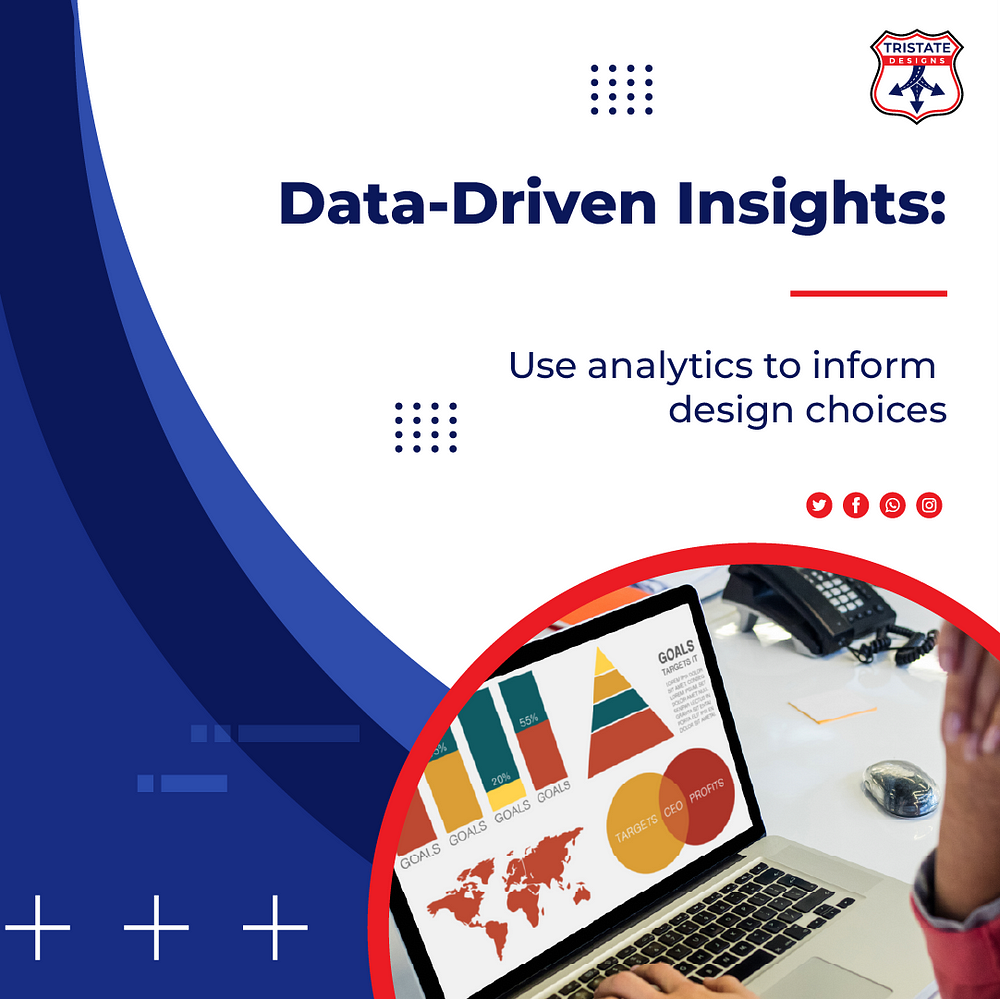Data-Driven Insights: Use Analytics to Inform Design Choices

In today’s digital landscape, data-driven insights have become indispensable for businesses seeking to create effective and user-centered designs. Whether in web design, app development, or overall digital strategy, analytics provide the clarity needed to make informed design decisions. Utilizing analytics helps companies understand user behavior, optimize design choices, and improve overall user experience.
Why Analytics Matter in Design
Analytics offer key insights into how users interact with your website or app. It goes beyond just tracking basic data points like page visits. Instead, it delves deep into user patterns, such as time spent on a page, bounce rates, conversion rates, and areas where users might be struggling. By using this information, designers can adjust elements like layout, call-to-actions, or navigation to improve user satisfaction and engagement.
Optimizing User Experience
Data-driven design is all about putting the user first. By analyzing data from tools like Google Analytics, Hotjar, or similar platforms, you can map out your user’s journey. If your visitors consistently drop off on a certain page, it may suggest that the design or content is lacking. Understanding what frustrates or excites your users through heatmaps or session recordings can be transformative for improving both the design and user flow.
Example: Let’s say you’re working on a website development project for an e-commerce site. The data may reveal that most users abandon their cart at the payment stage. By analyzing user behavior, you may identify friction points such as a complex checkout process or missing payment options. Designers can take this insight to simplify the process, ultimately increasing conversion rates.
Personalization with Data
Data doesn’t just optimize, it personalizes. Through user insights, businesses can offer tailored experiences. For example, tracking past behavior or demographics allows designers to create customized interfaces that speak directly to a user’s preferences. This can be particularly useful for marketing purposes where personalization has been proven to boost engagement.
Example: If you’re designing a site for a clothing brand, data might show that users from colder climates tend to browse the “Outerwear” section. By presenting them with a customized homepage featuring winter clothing, you’re more likely to engage them immediately, resulting in better conversion rates.
Continuous Improvement Through A/B Testing
Data-driven insights are also critical in A/B testing, where two or more versions of a design element are compared to determine which performs better. You can test different versions of headlines, call-to-action buttons, or even entire landing pages to understand what resonates best with your audience. This form of iterative design ensures that every decision is backed by hard data, making it easier to justify design choices.
Example: A Tristate Designs project might involve testing two different website layouts for a client to see which one drives more engagement. One might feature more images and a clean, minimalist layout, while the other is more text-heavy. The analytics will reveal which version performs better, offering a clear direction for future design iterations.
Tools for Gathering Data-Driven Insights
There are several tools available to gather the analytics required for data-driven design. Popular tools include:
- Google Analytics: For tracking user behavior, bounce rates, session duration, and more.
- Hotjar: For heatmaps, session recordings, and user feedback.
- Crazy Egg: For visualizing user behavior on-site.
- Optimizely: For running A/B tests to determine the effectiveness of different design elements.
Conclusion
Incorporating data-driven insights into your design process enables you to create more efficient, user-centered, and personalized experiences. It allows businesses to stay competitive in a crowded digital space by ensuring that their designs are not only aesthetically pleasing but also functional and user-friendly. Whether it’s through web design, website development, or app development, data informs every choice, leading to better outcomes and satisfied users.

